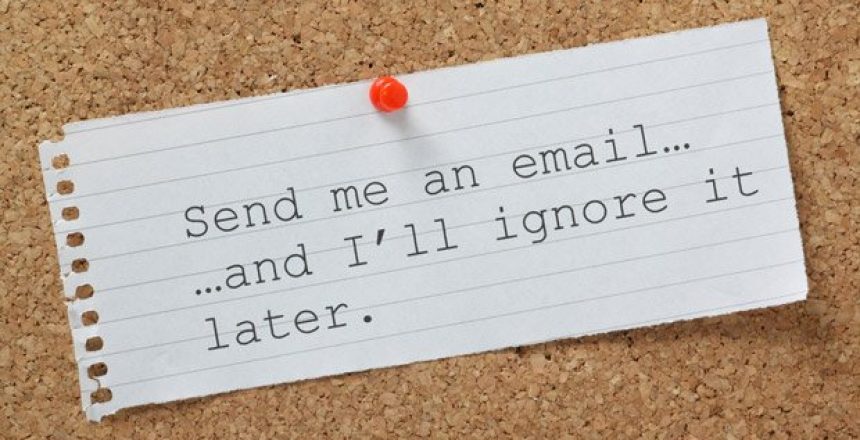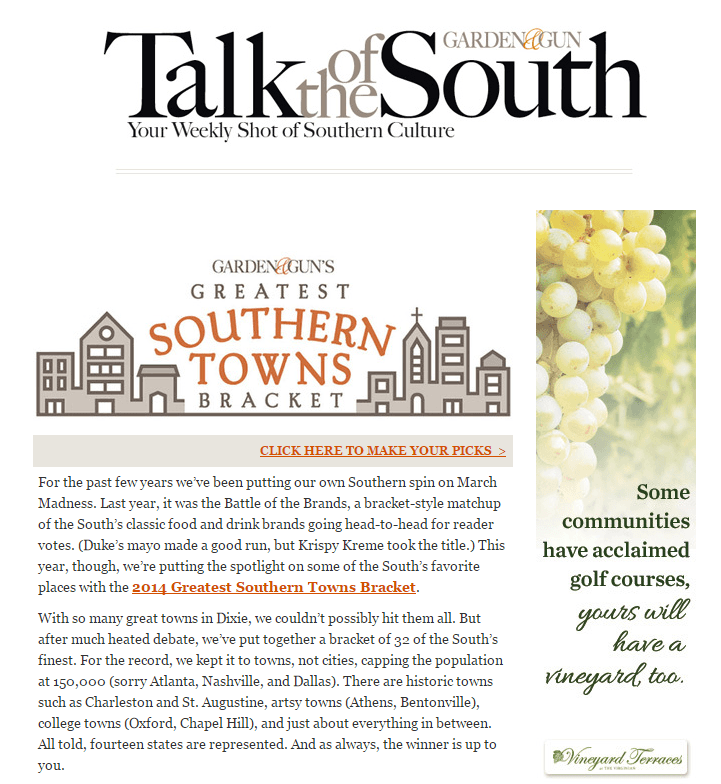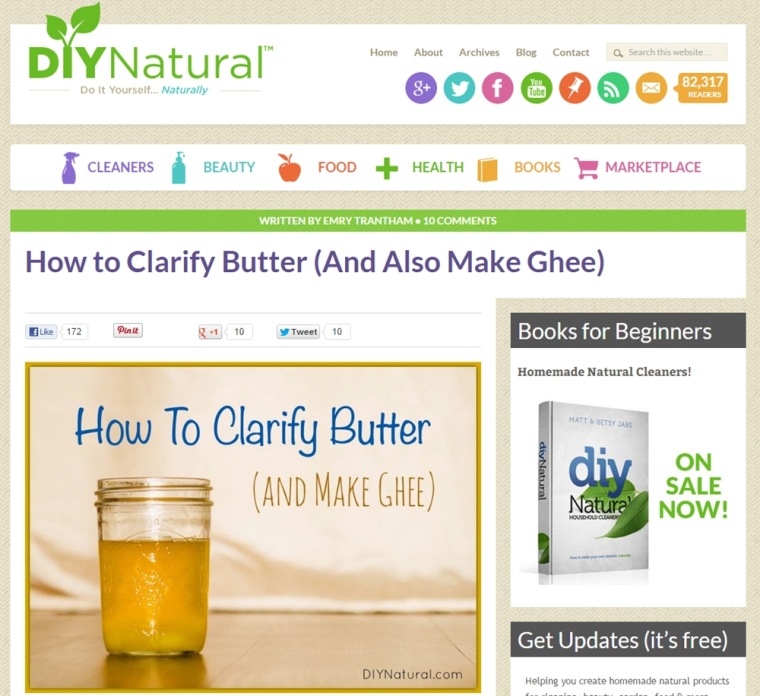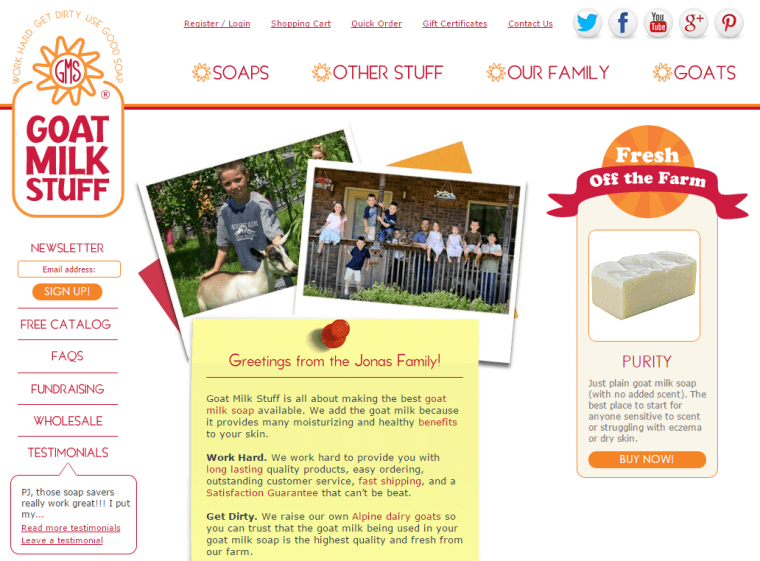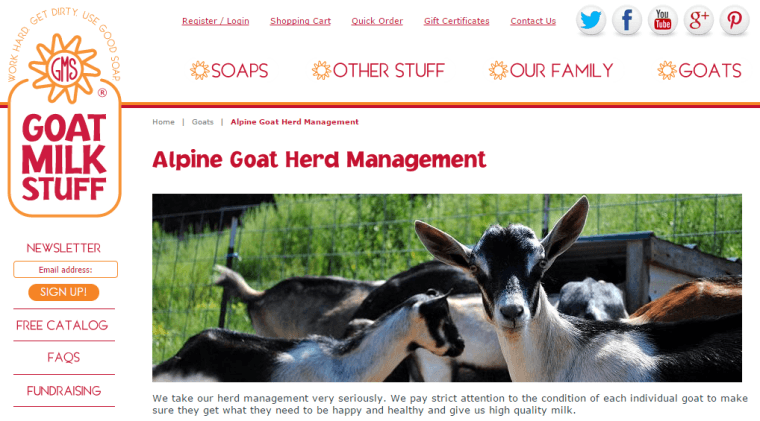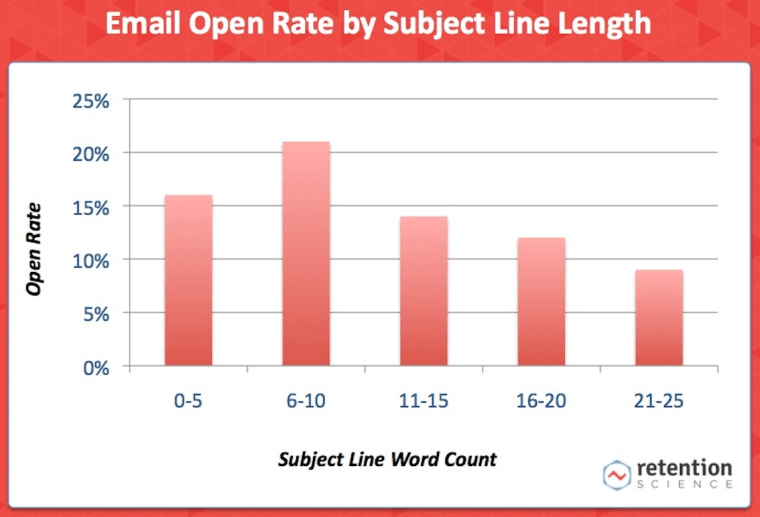Orig. Post December 19, 2014 by Dan Shewan, Search Engine Journal | Re-Post December 29, 2014
Many marketers have been seduced by social media advertising, perceiving it to be not only “cooler,” but also more effective than email marketing. There’s no denying that social media gets a lot more media attention than email marketing. However, claims that email marketing is no longer effective are simply not true, and any marketer worth their salt will tell you that email remains a cornerstone of their campaigns.
Not convinced? Then check out these three examples from some of the world’s leading email management companies to see what makes email marketing so effective.
1. Email Newsletters Can Be Awesome
Let’s face it – most email newsletters are crap. Far too many companies see email newsletters as another way to push sales, even though many people who sign up for a newsletter are not looking to actively make a purchase. This can result in low sign-up volumes, high rates of subscriber abandonment, and “newsletters” that are light on news and heavy on pushy sales tactics.
However, as Southern lifestyle magazine Garden & Gun demonstrated in a case study for email management service Emma, email newsletters can actually be awesome, when handled correctly.
Garden & Gun is the country’s leading Southern lifestyle magazine. With a diverse readership and an equally broad editorial focus, Garden & Gun focuses on everything from Southern heritage and culture to fine dining and trends in agriculture.
The magazine and website have attracted a loyal audience thanks to the quality of its journalism, something that Kim Alexander, Garden & Gun’s digital media editor, also wanted the newsletter, Talk of the South, to represent.
“We are at heart a print publication, but we only print six times a year,” Alexander said in an interview on the Emma blog. “So we use email to stay in touch with our readers and drive traffic to our website.”
Garden & Gun has grown its online audience considerably through Talk of the South. According to the Emma blog, the subscriber base of the average email newsletter will shrink by 30% every year, but Garden & Gun has managed to actually increase its newsletter readership by 40% since partnering with Emma three years ago.
Talk of the South is also a source of revenue for Garden & Gun. As you can see in the screenshot above, the newsletter features advertising, just as the print and online editions of the magazine do. However, the ads aren’t intrusive and are highly targeted and relevant to Garden & Gun’s readership. I’d be very interested to see the CTR data of these ads, as I suspect it would be high in comparison to traditional website banners.
Overall, the quality of Talk of the South is excellent. As a Garden & Gun reader myself, it’s one of the few newsletters I genuinely look forward to reading, and serves as a great example of how email newsletters can make everybody happy if they’re produced to a high standard and serve an editorial purpose.
2. Social Media And Email Marketing Aren’t Mutually Exclusive
As the recent midterm elections demonstrated, virtually everything can be reduced to a zero-sum, adversarial battle. However, it doesn’t have to be that way.
Just because email marketing might not be as “sexy” as social media doesn’t mean that the two can’t play nice. In fact, combining email marketing with a strong social media strategy can really pay off, as sustainable living blog DIY Natural discovered.
DIY Natural was borne of founder Matt Jabs’ passion for self-reliance and sustainable living. Even in the site’s early days, DIY Natural was attracting a great deal of traffic – a fact that forced Jabs to seriously consider how social media could expand his audience, and how email marketing could help him monetize his burgeoning blog.
In an interview on the AWeber blog, Jabs said that combining social media with email marketing allowed he and his wife Betsy to transition from a passion project into a full-time business.
“As our traffic and email list grows, our social media lists grow organically and consistently,” Jabs said. “At first, our Facebook page was growing like mad. We went up to about 80,000 likes on Facebook.”
Although he might not have intentionally set out to combine social media with email marketing when he launched the site, the fact that Jabs adopted the two strategies in tandem early on allowed DIY Natural to grow incredibly quickly.
Of course, the site’s commitment to quality content was a major factor. In fact, I actually signed up for the DIY Natural newsletter as I was researching this article. My wife and I share similar views on self-reliance and sustainability as Matt and Betsy, and we already make our own laundry detergent and other household items (including ghee). As such, DIY Natural’s content is perfect for us, and exactly the type of content I’d like to see in my inbox every week.
Matt and Betsy’s success just goes to show that you don’t need to rob Peter to pay Paul when it comes to email marketing.
3. Email Marketing Is PERFECT For Small Businesses
One of the most stubborn misconceptions about email marketing is that you need an entire marketing department to handle running effective email campaigns.
Although a large dedicated team doesn’t hurt, it’s by no means a requirement. Email marketing can be a huge boost for small businesses. Case in point, family-owned business Goat Milk Stuff, a business that sells – you guessed it – products made from goat’s milk.
Like many small businesses, Goat Milk Stuff wrestled with the desire to grow beyond small craft fairs and trade shows and their commitment to offering outstanding, personalized service to customers.
In a post at the MailChimp blog, Goat Milk Stuff cofounder PJ Jonas said that while she and her husband Jim (and their eight children, who also help run the company) diligently collected emails during trade shows, they wanted to expand without compromising their business’ approachable, family-friendly values. Surprisingly, email marketing allowed them to do both.
“We sent some newsletters where we gave customers a choice of which special they wanted,” said PJ. “Either a 20% discount or free shipping. What we discovered was that some people always choose the discount, and some always choose the shipping—it’s not necessarily which special saves them more money. So we took that information and now we alternate our specials.”
So, despite spending most of their time actually making their products, tending to their herd of goats, and somehow managing to run an eight-child household (seriously, bravo), Jim and PJ also manage to operate highly successful email marketing campaigns that offer their customers genuine value while keeping things simple – all without a formal marketing department in sight.
How Do You Launch An Effective Email Campaign?
So, now that we’ve learned some valuable lessons in how effective email marketing campaigns can impact different types of businesses, how do you go about launching your own?
Obviously every email marketing campaign is different. There are, however, some “rules” that can help you make some headway.
Bonus Tip #1: A/B Test Your Email Marketing Campaigns
You know what they say about assumptions, right? Don’t make an ass out of yourself and tank your campaign in the process – test early, and test often.
Many email management tools include built-in A/B testing functionality, allowing you to test specific aspects of your email marketing campaigns to ensure maximum impact. MailChimp, for example, wrote about the results of several A/B tests from successful campaigns to show how a rigorous approach to testing can yield substantial improvements.
Bonus Tip #2: Keep Subject Lines Short and Sweet
We’ve written about email subject lines before. Like a good chili recipe, everyone seems to have their own preferred way of doing things, but when it comes to the “perfect” subject line, shorter is best – specifically, between six and 10 words.
This data from Retention Science indicates that email subject lines between six and 10 words consistently have the best open rates. Compare the open rate of these subject lines with that of subject lines between 21 and 25 words in length and you’re talking a major drop-off.
Of course, there are many other factors that contribute to the success of an email marketing campaign. To read more about how to improve your open rates, check out Retention Science’s full study here.
Bonus Tip #3: Send Emails on Thursday Mornings at 8 a.m.
This is pretty specific advice, right? For sure, but we’ve also covered the best times to send email campaigns in the past, and we’ve found that Thursday mornings between 8-9 a.m. is an ideal window of opportunity to increase your open rates.
Of course, what works for us might not work for you (see Bonus Tip #1), so be sure to experiment with the timing of your email campaigns to discover what times result in higher open rates.
